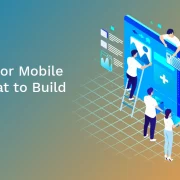
Asynchronous Vs. Synchronous Learning: What’s Best for Your Students
The emergence of online education has quite literally opened up a world of new possibilities. Both individuals and institutions have begun to be attracted towards this digital minefield to gain better credibility, flexibility, and integrity. As a result, the percentage of students subscribing to online courses has jumped from a meagre 15.6% in 2004 to 43.1% in 2016. In fact, this number is set to cross an overwhelming 50% by 2021.
However, when it comes to online education, there are two schedules from which learners need to make an informed choice. These schedules are – synchronous and asynchronous learning. While synchronous learning subscribes to the conventional mode of real-time teaching, asynchronous learning is highly non-traditional and learner-centric in context and approach. More so, their respective advantages over one another make the task of taking a pick all the more difficult.
Therefore, as an educational institution, if you too are wondering which form of learning to go for, here is a detailed explanation of what both of them are and how they can help you improve your learning outcomes –
Table of Contents:
- What is Synchronous Learning?
- What is Asynchronous Learning?
- Difference Between Synchronous Vs. Asynchronous Learning
- Which One Should You Choose?
- The Way Forward
What is Synchronous Learning?
Synchronous learning is essentially the mode of learning where all students are engaged in a learning activity on a real-time basis. This is to say that they are present at the same place, at the same time, and are thereby exposed to the same learning process simultaneously. This place can either be a traditional classroom or a live virtual session. However, the condition is that collaboration and feedback have to occur on the spot.
Synchronous learning, in its own right, offers a variety of benefits like:
1. Dynamic Learning
Synchronous learning allows the exploration of topics and concepts in a highly dynamic manner. Owing to its speed and swiftness, it imparts a certain depth of instruction to your overall training routine.
2. Instant Feedback
Synchronicity in learning is largely defined by instant and immediate feedback. You can promptly point out the mistakes of your students, if any, and have them corrected on the spot. Your students don’t have to schedule appointments with you to avail of your guidance & mentorship.
3. Better Engagement
Last but not least, synchronous learning also facilitates continuous, constant, and consistent engagement. With the assistance of tools like video-conferencing, live broadcasts, real-time chatting, and group calls, it offers a better sense of understanding, comprehension, and interpretation.
What is Asynchronous Learning?
On the other hand, asynchronous learning is a mode of learning where students can learn according to their needs, schedules, and styles. Unbound by time or place, mentors in this form of learning provide reading material and downloadable lectures that can be read and viewed by the students as per their own convenience. They can access information, make demonstrations, and submit assignments when it suits them best.
The advantages accrued by asynchronous learners generally include:
1. Higher Flexibility
As compared to its synchronous counterpart, asynchronous learning provides for much higher flexibility. Your students don’t have to be present at the same place or at the same time. They can continue with their other schedules and access the learning resources as and when they deem fit.
2. Easy Pacing
Asynchronous learning also permits your students to determine, define and set their own pace of learning. Based on how much of a certain topic they have understood, they can either begin from scratch or absorb new knowledge in congruence with their learning modes, mediums, and styles.
3. Greater Affordability
Even in terms of cost-effectiveness, asynchronous learning scores higher over synchronous learning. Since it does not require daily instruction or continuous attention, its content is usually priced on a lower scale. This equips students to learn as much as they can at a modest rate.
Difference Between Synchronous Vs. Asynchronous Learning
To gain a better idea about what synchronous and asynchronous learning truly pertains, it would be wise to examine both the concepts in great detail. Here’s a comprehensive table which lists the core essentials of both these types of learning for a quick comparison –
| Factors of Comparison | Synchronous Learning | Asynchronous Learning |
| Location |
· Traditional classrooms · Online classes |
· Online class · Self-guided study · Any other place of the learner’s choice |
| Tools |
· In-person lectures · Live webinars · Scheduled chat rooms · Group phone calls · Video conferences |
· Recorded classes · E-mails · Online training courses · Pre-recorded webinars · Social media groups · Collaborative documents |
| Feedback | Instant feedback from both mentor and peers | Feedback receipt varies with time |
| Pace | Group – paced : Learning occurs with everyone in the group | Self- paced : Learning occurs in a personalized way for each individual |
| Time | The learning curve begins and ends at the same time for everyone | The learning curve begins and ends for each student differently |
| Resources | Same resources available at the same time | Different resources available at different times |
Based on this table, it will become quite easy for you to choose the particular type of learning which fulfills your aims, objectives and goals in the most inclusive, exhaustive, and efficient way.
Which One Should You Choose?
Depending on your learning targets, course content, instruction delivery methods, and resource availability, you are free to pick whatever form of learning appeals to you the most. Nonetheless, as an institution, it would be smarter to opt for asynchronous learning over synchronous learning in the long run.
This is primarily because asynchronous learning will enable you to create a self-guided and self-paced learning environment, despite the constraints imposed by time, location, or resources. Your content will become much more engaging, convenient, and interactive, thus giving your students the flexibility to learn, absorb, and progress at a pace of their choice. More so, being a learner-centric method, asynchronous learning will also fetch you a better user experience, a lower price tag, and a focused training approach.
The Way Forward
With changing times, the penetration of digital education in schools, colleges, and universities will witness an exponential rise. More and more educational institutions, irrespective of their physical, financial, or social infrastructure, are going to run courses that rely exclusively on the power of innovation, access, and technology. So much so that the online education market will breach the revenue mark of $2 billion and thus, reach approximately 9.5 million users, across the world, by 2021!
In such a burgeoning scenario, you, as an educational institution, will need to make a final choice between synchronous and asynchronous learning. While it is true that the latter will lend you better flexibility and greater outreach – ultimately, you will have to pick the model which suits your specific needs and requirements the best. However, no matter which methodology you choose, make sure that your learners’ overall educational experience remains engaging, diverse, and enriching. That in itself will become the true measure of your success.
To know more about both asynchronous and synchronous forms of learning and how they can engineer next-gen content solutions, click here.
Suggested Reads:
- Digital Solutions for Universities and Higher Education Institutions
- How Mobile Learning is Changing the Educational Landscape
- 9 Reasons for the Growth of eLearning in Education
- Why Should Colleges and Universities Develop eLearning Programs?
- Best eLearning Solutions for Digital Natives
- How to Create and Deliver the Best K-12 Learning Solutions
Need to know more about our Products & Services? Drop us a Note.
We respect your privacy. We use the information you provide us to send you relevant content about industry trends and our products & services. You may unsubscribe from our list at any time. For more information, check out our Privacy Policy




